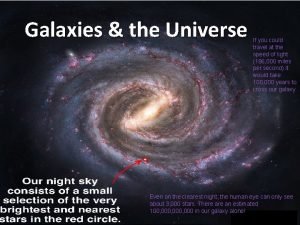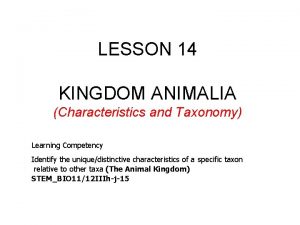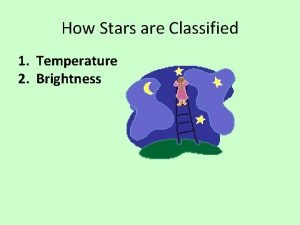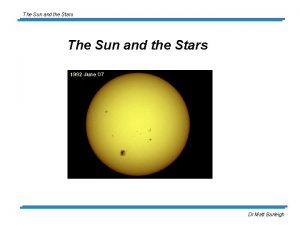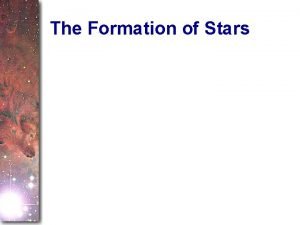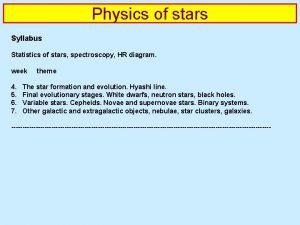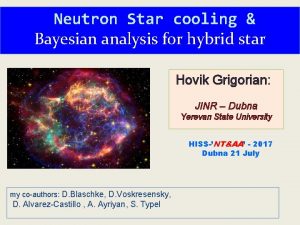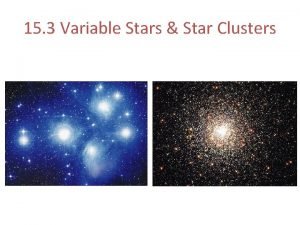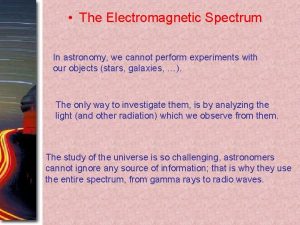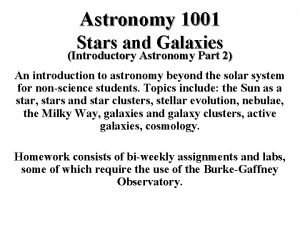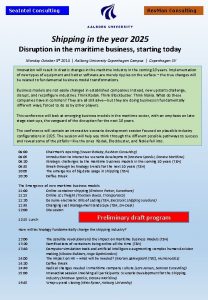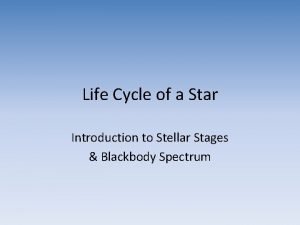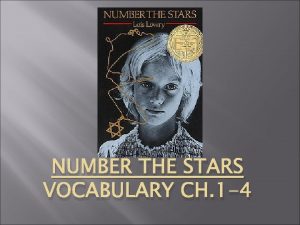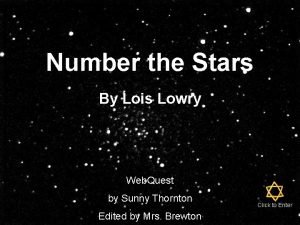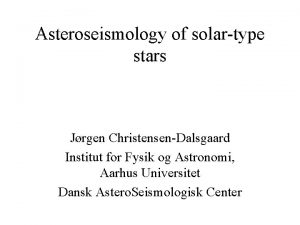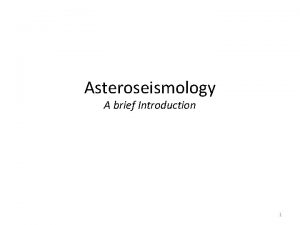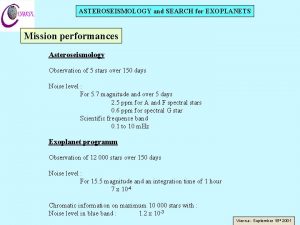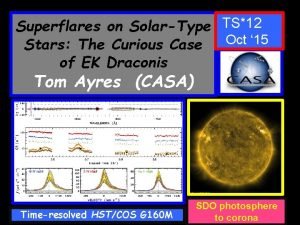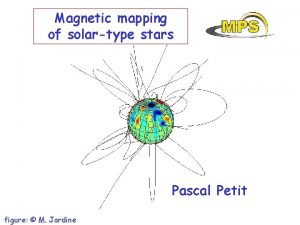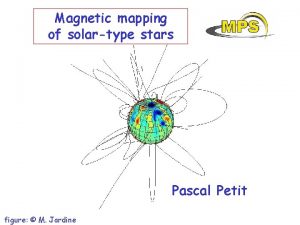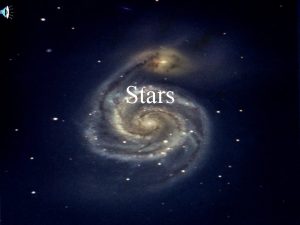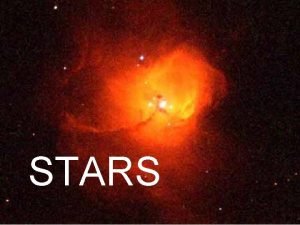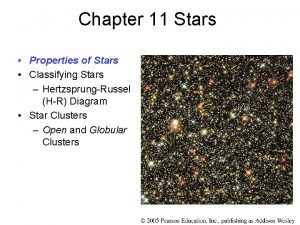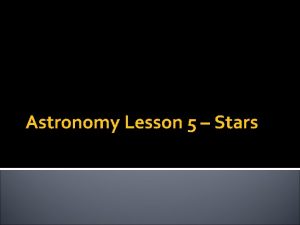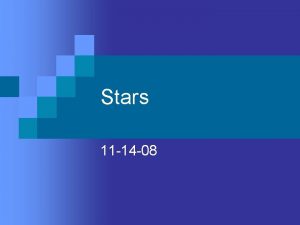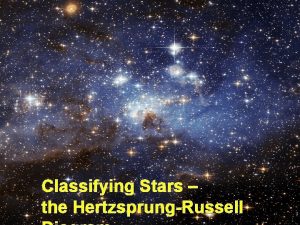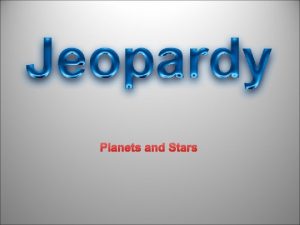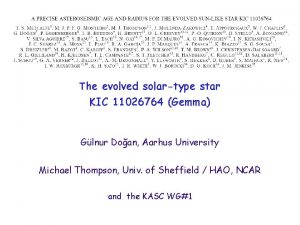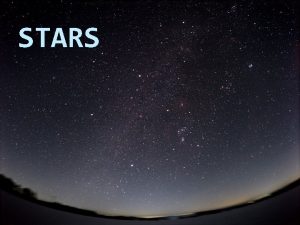Asteroseismology of solartype stars Revolutionizing the study of















































































- Slides: 79

Asteroseismology of solar-type stars Revolutionizing the study of solar-type stars Hans Kjeldsen, Aarhus University

Asteroseismology: Solar-like stars Co. Ro. T HD 49385 1. 2. 3. 4. Measuring oscillation frequencies Identify modes (p, g, mixed, l, n, m) Compute model frequencies Compare observed frequencies with the model The Sun Christensen-Dalsgaard et al. 1995

Observations: Challenges • Accuracy of oscillation frequencies • Mode identification, avoided crossings, (curvature in the Echelle diagram) • Rotational splitting, mode lifetime, mode amplitudes, granulation

Helioseismology asteroseismology

State-of-the-art Ground-based asteroseismology of solar-type stars UCLES at the AAT UVES at the VLT HARPS at ESO 3. 6 m

Ground-based In most cases: • Low SNR • Short obs. period

(Fabien Carrier)

(Fabien Carrier)



High signal-to-noise observations of solar-like oscillations





Mixed mode

Martic et al. 2004: amp = 40 cm/s per mode = 6 -7 ppm per mode

Brown et al. 1991 Martic et al. 2004: amp = 40 cm/s per mode = 6 -7 ppm per mode












2 0 3 4 3 1 ? ? ? 2 0

Velocities of a Cen A with UVES/VLT Precision: 50 -70 cm/s. Cadence 26 seconds!

35 UVES/VLT 2 + UCLES/AAT Butler, Bedding, Kjeldsen et al. 2003, 2004

2 0 3 1

Radial p-mode (radial orders)

α Centauri system OPAL EOS, OPAL 96 opacity, He, Z settling (Teixeira et al. )

α Centauri A

α Centauri A

α Centauri B

α Centauri B

Models: Challenges • • Input physics Properties: rotation, mixing Surface frequency offset Avoided crossings – sensitivity to finer details in the models

The Surface Offset O-C

Bi. SON Model S

The Surface Offset 1. Frequency (f) 2. Large separation MODEL S 3038. 95 135. 855 GOLF 3034. 15 134. 810 radial order, n (21) 0. 16 17 -25 % (21) 0. 78 17 -25 % 3. f(n=17) 4. f(n=13) 2497. 35 1957. 46 2496. 04 1957. 45 0. 05 17 % 13 % 0. 0005

Observations: Challenges • Accuracy of oscillation frequencies • Mode identification, avoided crossings, (curvature in the Echelle diagram) • Rotational splitting, mode lifetime, mode amplitudes, granulation

How do we improve this?

How do we improve this? • Higher frequency resolution

How do we improve this? • Higher frequency resolution Space missions

How do we improve this? • Higher frequency resolution • Lower noise


ted ina m o d n tio ula Gran ted lat l i c s O ion na i m o sd

How do we improve this? • Higher frequency resolution • Lower noise r e t s o e. P h t e Se ! G N O on S

Co. Ro. T (CNES) 2006 Seismology for a large number of stars

Co. Ro. T (CNES) 2006 HD 49385 HD 49933 HD 181420

Co. Ro. T (CNES) 2006 HD 49385 HD 49933 HD 181420





Same problem as in Procyon…. l=0, 2 and 1, 3 ridges? The F-star problem


HD 181420 Same problem as in Procyon and HD 49933 …. l=0, 2 and 1, 3 ridges?

Simple asteroseismology…

Simple asteroseismology…

Asteroseismology as a tool • Stellar properties based on the large separation • 8 -10% error in mass, 1% error for the large separation will give a 3% error for the stellar radius

Asteroseismology as a tool • Knowledge of the effective temperature (e. g. typical error of 2%) will then give the absolute luminosity (error 10%) • This will improve the mass and radius estimate further

NASA Kepler launched in March 2009

HAT-P-7

Q 0 Q 1 Days after launch


Models: Challenges • • Input physics Properties: rotation, mixing Surface frequency offset Avoided crossings – sensitivity to finer details in the models

Kepler Asteroseismic Activities • • • Asteroseismology on exoplanet candidates Target selection for KASC Data distribution via KASOC Organizing data analysis Workshops; KASC III Publishing papers





Chaplin et al… 2010 Based on the first half of the KASC Survey… hundreds of stars showing solar-like oscillations


The challenge… • Accuracy of oscillation frequencies (Kepler will observe some stars for 3, 5 years) • Mode identification (“F-star problem”) • Rotational splitting, mode lifetime, mode amplitudes, granulation, activity • Input physics (EOS, opacities, convection, rotation, mixing) and the surface frequency offset • Avoided crossings (sensitivity to finer details in the models) • g-modes

The challenge… • Co. Ro. T, Kepler, PLATO, SONG… will provide the data and challenge theories of stellar evolution • Improved stellar modelling will provide the deeper understanding • Remember to enjoy those amazing data
 There are millions of stars in the sky
There are millions of stars in the sky Khi nào hổ con có thể sống độc lập
Khi nào hổ con có thể sống độc lập Diễn thế sinh thái là
Diễn thế sinh thái là đại từ thay thế
đại từ thay thế Thế nào là hệ số cao nhất
Thế nào là hệ số cao nhất Vẽ hình chiếu vuông góc của vật thể sau
Vẽ hình chiếu vuông góc của vật thể sau Slidetodoc
Slidetodoc Thế nào là mạng điện lắp đặt kiểu nổi
Thế nào là mạng điện lắp đặt kiểu nổi Mật thư anh em như thể tay chân
Mật thư anh em như thể tay chân Lời thề hippocrates
Lời thề hippocrates Vẽ hình chiếu đứng bằng cạnh của vật thể
Vẽ hình chiếu đứng bằng cạnh của vật thể Chụp tư thế worms-breton
Chụp tư thế worms-breton Quá trình desamine hóa có thể tạo ra
Quá trình desamine hóa có thể tạo ra Sự nuôi và dạy con của hươu
Sự nuôi và dạy con của hươu Các châu lục và đại dương trên thế giới
Các châu lục và đại dương trên thế giới Dạng đột biến một nhiễm là
Dạng đột biến một nhiễm là điện thế nghỉ
điện thế nghỉ Bổ thể
Bổ thể Nguyên nhân của sự mỏi cơ sinh 8
Nguyên nhân của sự mỏi cơ sinh 8 Phản ứng thế ankan
Phản ứng thế ankan 101012 bằng
101012 bằng Thiếu nhi thế giới liên hoan
Thiếu nhi thế giới liên hoan Fecboak
Fecboak Chúa sống lại
Chúa sống lại Một số thể thơ truyền thống
Một số thể thơ truyền thống Sơ đồ cơ thể người
Sơ đồ cơ thể người Công thức tính thế năng
Công thức tính thế năng Số nguyên tố là
Số nguyên tố là Tỉ lệ cơ thể trẻ em
Tỉ lệ cơ thể trẻ em đặc điểm cơ thể của người tối cổ
đặc điểm cơ thể của người tối cổ Các châu lục và đại dương trên thế giới
Các châu lục và đại dương trên thế giới ưu thế lai là gì
ưu thế lai là gì Thẻ vin
Thẻ vin Các môn thể thao bắt đầu bằng tiếng đua
Các môn thể thao bắt đầu bằng tiếng đua Tư thế ngồi viết
Tư thế ngồi viết Bàn tay mà dây bẩn
Bàn tay mà dây bẩn Hát kết hợp bộ gõ cơ thể
Hát kết hợp bộ gõ cơ thể Từ ngữ thể hiện lòng nhân hậu
Từ ngữ thể hiện lòng nhân hậu Trời xanh đây là của chúng ta thể thơ
Trời xanh đây là của chúng ta thể thơ Tư thế ngồi viết
Tư thế ngồi viết Ví dụ giọng cùng tên
Ví dụ giọng cùng tên Gấu đi như thế nào
Gấu đi như thế nào Thể thơ truyền thống
Thể thơ truyền thống Process of method study
Process of method study Time and motion study example ppt
Time and motion study example ppt Marty lobdel
Marty lobdel Case series
Case series Phytogeography of india
Phytogeography of india Retrospective cohort study
Retrospective cohort study Objective of work study
Objective of work study Jupiler
Jupiler Characteristics of animalia kingdom
Characteristics of animalia kingdom How are stars classified?
How are stars classified? Antagonist in the fault in our stars
Antagonist in the fault in our stars E 0
E 0 Vocabulary for number the stars
Vocabulary for number the stars The stars
The stars Stars outline
Stars outline With the stars
With the stars Consecutive integer problems
Consecutive integer problems Where do stars come from
Where do stars come from Eehor
Eehor Pulsating variable stars
Pulsating variable stars Little dipper and big dipper
Little dipper and big dipper Dancing the stars
Dancing the stars With the stars
With the stars 1001 stars
1001 stars Sea intel
Sea intel When the stars threw down their spears explain
When the stars threw down their spears explain Anatomy of a sand dollar
Anatomy of a sand dollar Pamela arenas
Pamela arenas The fault in our stars doc
The fault in our stars doc The plough and the stars characters
The plough and the stars characters Rising stars maths vocabulary
Rising stars maths vocabulary Star life cycle simulation
Star life cycle simulation Number the stars vocabulary
Number the stars vocabulary Number the stars webquest
Number the stars webquest Hrt to hrt merrylands
Hrt to hrt merrylands Stars used for navigation
Stars used for navigation Answer the questions what is your favourite tv series
Answer the questions what is your favourite tv series


















































